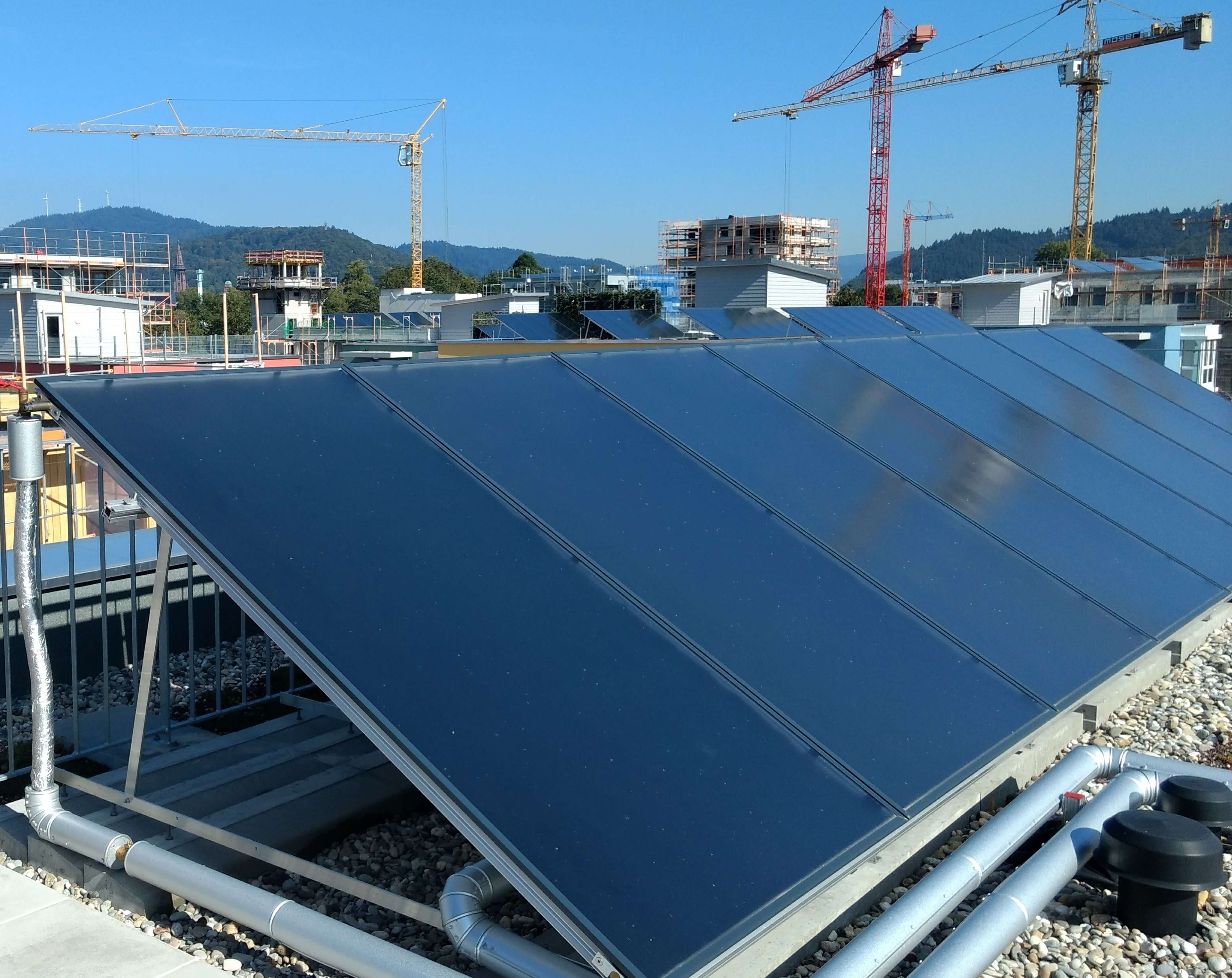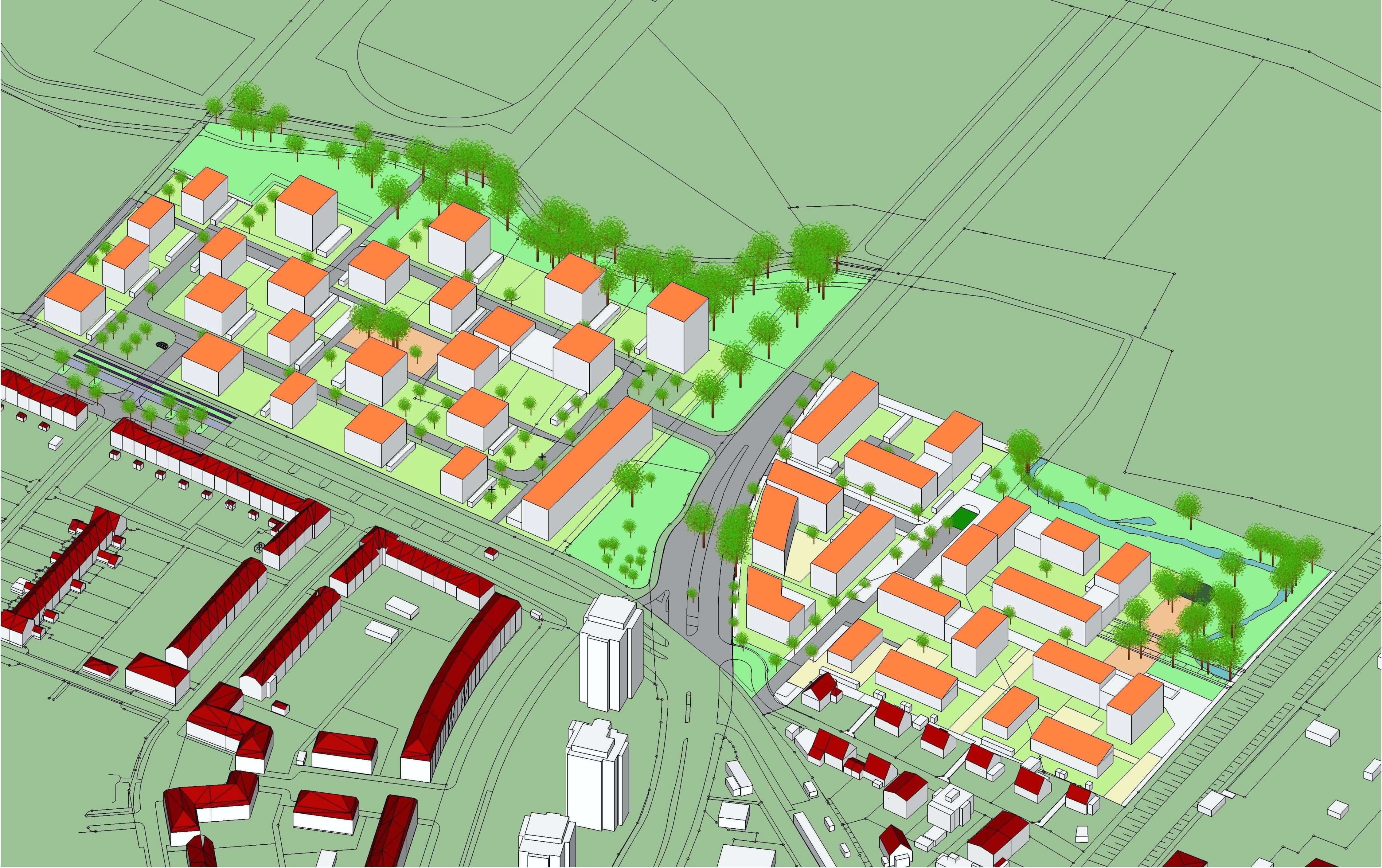| Duration: | 06/2013 - 04/2018 |
| Contracting Authority/ Sponsors: | Federal Ministry for Economic Affairs and Energy (BMWi), Projektträger Jülich (PtJ) |
| Project Partners: | badenovaWÄRMEPLUS GmbH & Co. KG |
| Website: | http://www.freiburg.de/pb/,Lde/208548.html |
| Project Focus: |
EnWiSol – Solar Thermal Energy in the Municipal Energy Supply
Energy Economic Analysis and Demonstration Project Freiburg-Gutleutmatten


During this project, the decentralized integration of solar thermal energy plants into a heat supply concept based on a cogeneration unit is examined. The operation of the cogeneration unit is optimized for the best possible interaction with the power grid and the local heating network for a minimization of distribution loss. The central objective of the project is to implement and review the concept and operations management in the demonstration project Freiburg-Gutleutmatten and subsequently derive generally applicable regulations for the long-term utilization of solar thermal energy in comparable residential areas, especially in light of massively changing energy supply structures.
The main goals of the project are: Evaluation of the role of solar thermal energy in the supply of urban quarters under current and future energy economic framework conditions. The focus is on the integral observation of power and thermal loads and the on-grid energy sources power and district heat. A second goal is the demonstration of an innovative integration of solar thermal energy into the local heat grid of the development area Gutleutmatten in Freiburg im Breisgau. Since 2013, the development area Gutleutmatten has been established as part of inner-city development, creating 500 residential units, living space of 38,000 m² and a heat demand of approx. 2600 MWh/a. The district heat grid and the solar thermal energy collector systems - located on the buildings and integrated in a decentralized fashion - were put into operation to supply the first completed residential building in the summer of 2016. The technical approach is the decentralized coupling of solar thermal energy with the goal of shutting down the local heat grid over longer periods during the summer. This technical concept is supposed to cover the heat demand through the combination of 38 decentralized collector systems with decentralized storage units and heat from a central cogeneration unit. The decentralized solar thermal energy concept provides for a collector area of approx. 2200 m² and a total volume of the distributed storage systems of approx. 160 m³ which should enable a theoretical max. solar coverage rate of approx. 30% (corresponding to a projected, theoretical utilizable yield of max. 660 MWh/a) and operation based purely on solar thermal energy for longer periods during the summer. The remaining demand is met by the cogeneration unit powered by natural gas. The distribution losses of the grid are projected to be approx. 260 MWh/a, with the reduction of losses due to reduced operating hours already considered.